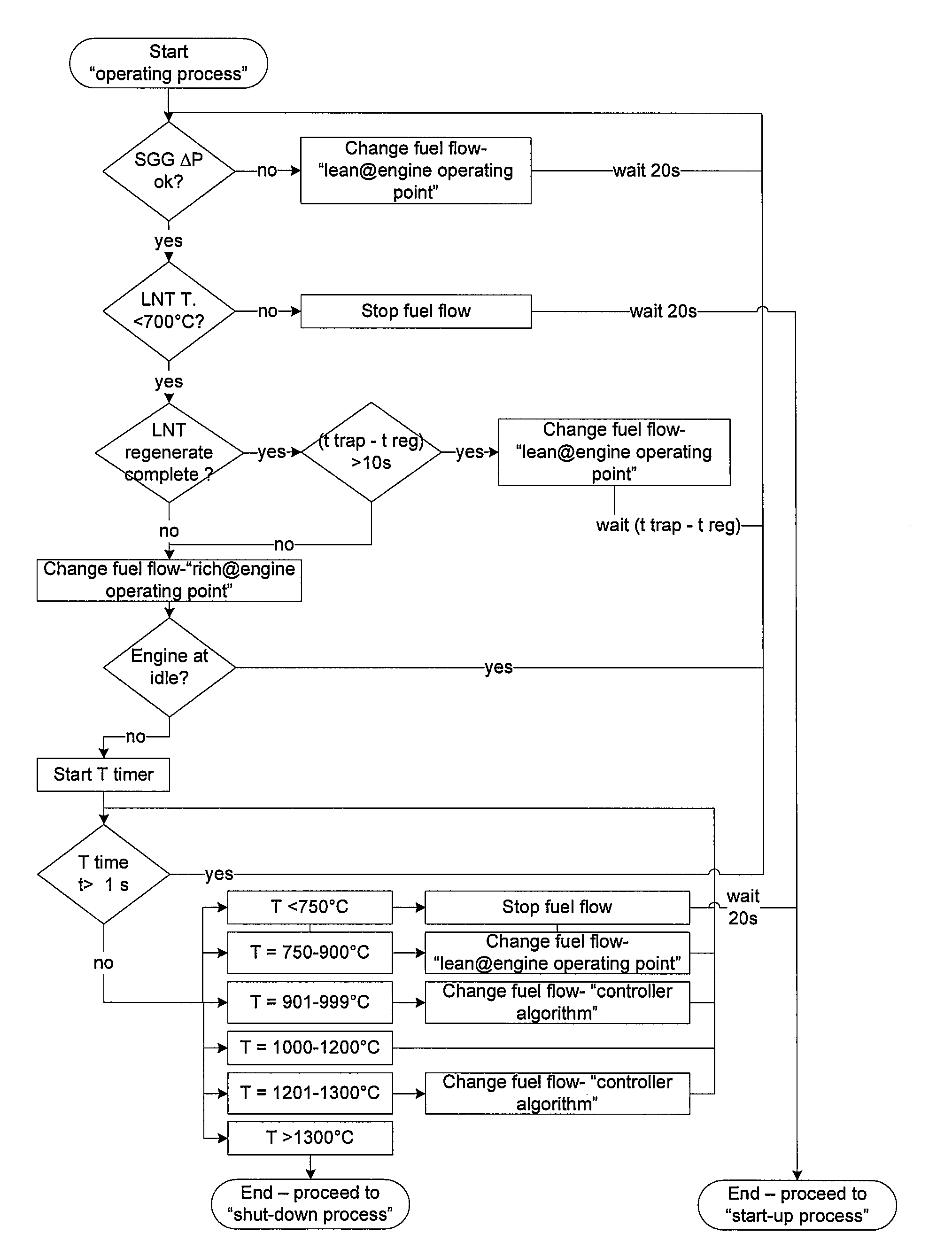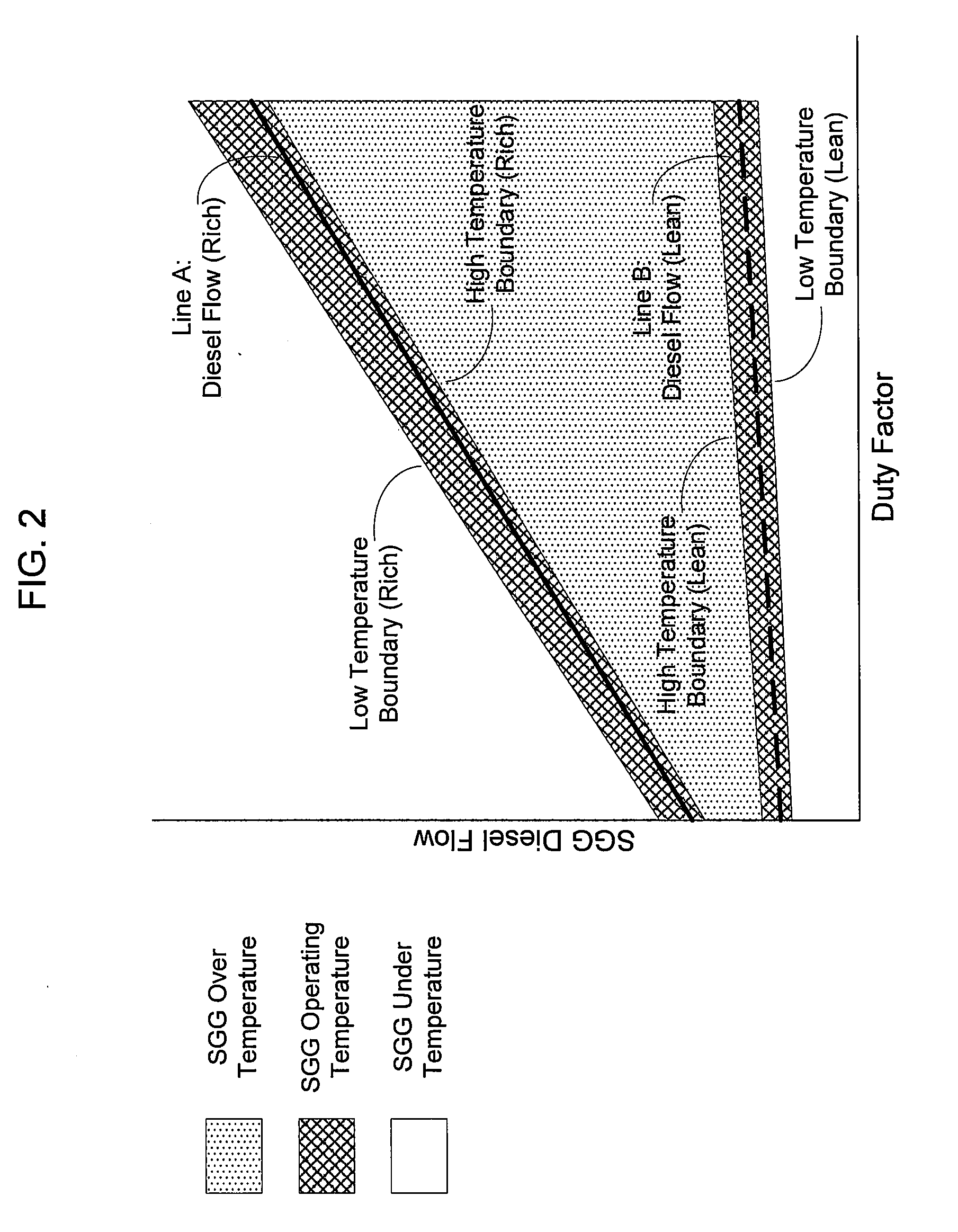However in this situation, the reactant supply and composition will vary over the operating
duty cycle of the engine, and this can present some challenges as described below.
Furthermore, the pressure of the engine exhaust
stream is generally limited.
Reforming of
hydrocarbon fuel, especially heavy hydrocarbons (such as diesel), can be difficult due to the range of components that make up the fuel.
Inadequate
vaporization and mixing of the fuel with the engine exhaust stream can lead to localized fuel-rich conditions, resulting in the formation of carbon within the syngas generator.
As mentioned above, the use of the engine exhaust stream as a reactant in the syngas generator imposes inherent supply and operational challenges.
Operating with low and varying concentrations of
oxygen, water,
carbon dioxide and heat, at the same time as endeavoring to maintain appropriate
oxygen-to-carbon (O / C) and steam-to-carbon (S / C) ratios to prevent detrimental carbon build-up over the operating
duty cycle of the engine, is a challenge.
While many have attempted to eliminate or minimize carbon formation, practically there is an inevitable tendency for carbon to form during the conversion process of the fuel into syngas.
Over time, carbon accumulation can impede the flow of gases, increase the pressure drop across the syngas generator, and reduce the durability of the syngas generator.
Large accumulations of carbon also have the potential to create excessive amounts of heat that can damage the syngas generator if the carbon is oxidized in a short period of time.
The carbon can also travel downstream of the syngas generator, increasing the
back pressure of the engine exhaust and adversely affecting exhaust after-treatment devices, for example, by blocking catalyst and adsorbent reactive sites.
At these elevated temperatures, high thermal stresses can be created during the thermal
cycling of the syngas generator.
Thermal stresses can reduce the durability of the syngas generator over its lifetime.
Small magnitude thermal cycles are desired, for example, less than a 100° C. range, to promote material durability.(3) High
capital cost resulting from the high cost of the catalyst material.(4) Low durability as the catalyst is susceptible to poisoning by contaminants contained in the reactants.
This would result in the thermal
cycling of the syngas generator, which can reduce the durability and reliability of the device, as well as causing delays in the production of syngas.
Discarding excess syngas results in a significant fuel penalty that will typically cause the
overall efficiency of the engine system to be unacceptably low, and the
operating cost to be high.
However, this approach can alter the
combustion characteristics of the engine, requiring extensive testing prior to approval for use and warranty by the engine manufacturers.(2) Reducing the supply of reactants (for example, fuel and engine exhaust) to the syngas generator so that it remains sufficiently warm that it can restart within a few seconds, but in the meantime produces smaller quantities of syngas.
This approach increases the complexity of the reactant control which increases the cost of the exhaust after-
treatment system.(3) Using a “mini” syngas generator (such as a catalytic partial oxidizer) to feed the main syngas generator sufficiently to keep it warm, so it can be rapidly restarted.
However, this requires a second fuel processor device in the system which adds to the system complexity and cost.
The shortcoming of a catalytic type fuel processor and the above approach to maintain the desired
operating temperature of the fuel processor can include:(1)
High frequency cycling of the
fuel supply is required, for example, less than or equal to 10 seconds to prevent the temperature of the catalyst from moving outside a desired range and to reduce the magnitude of the thermal cycles of the catalyst.(2) Higher operating fuel penalty.(3) Increased component and
control complexity and cost.
 Login to View More
Login to View More  Login to View More
Login to View More 


